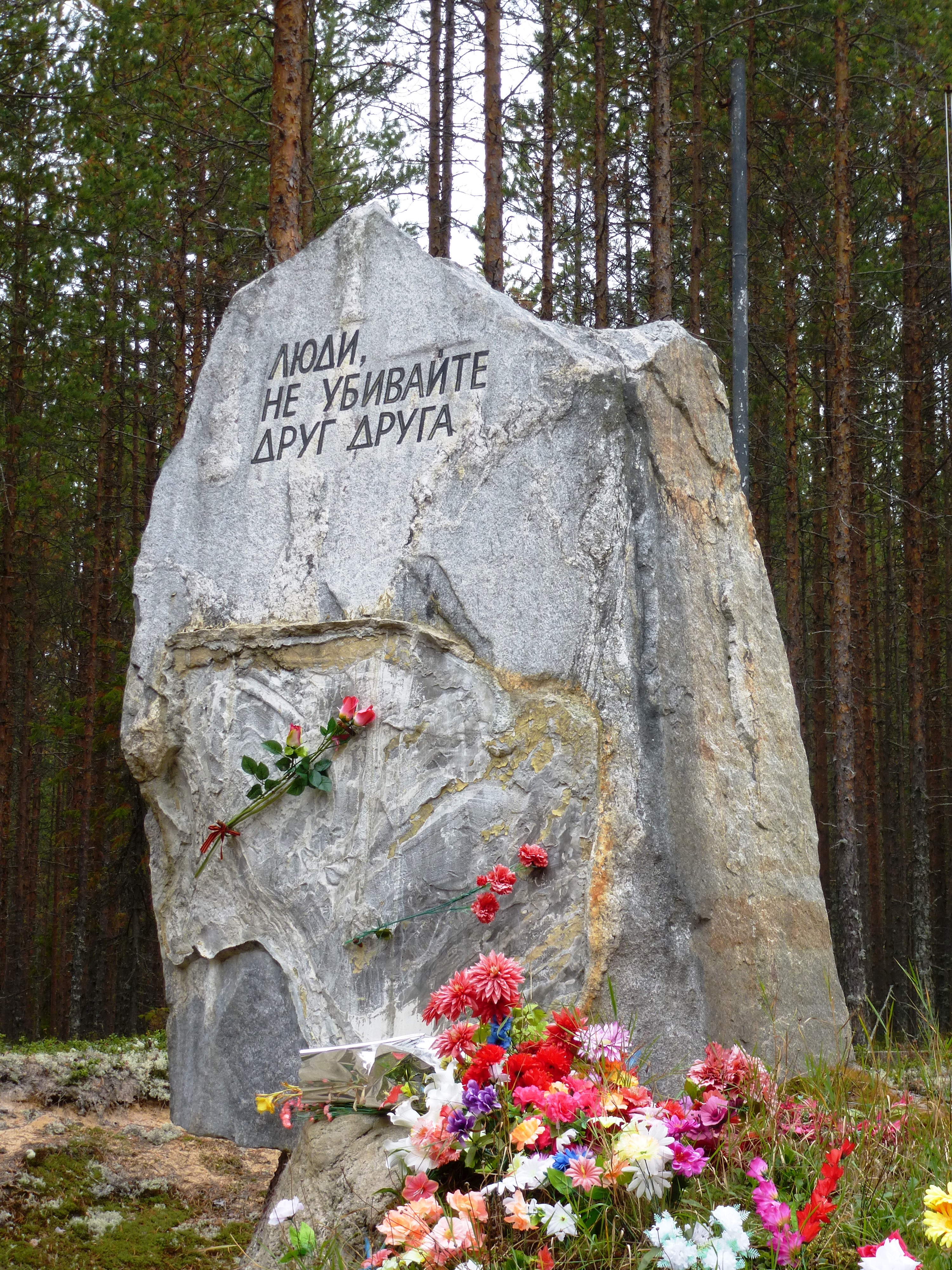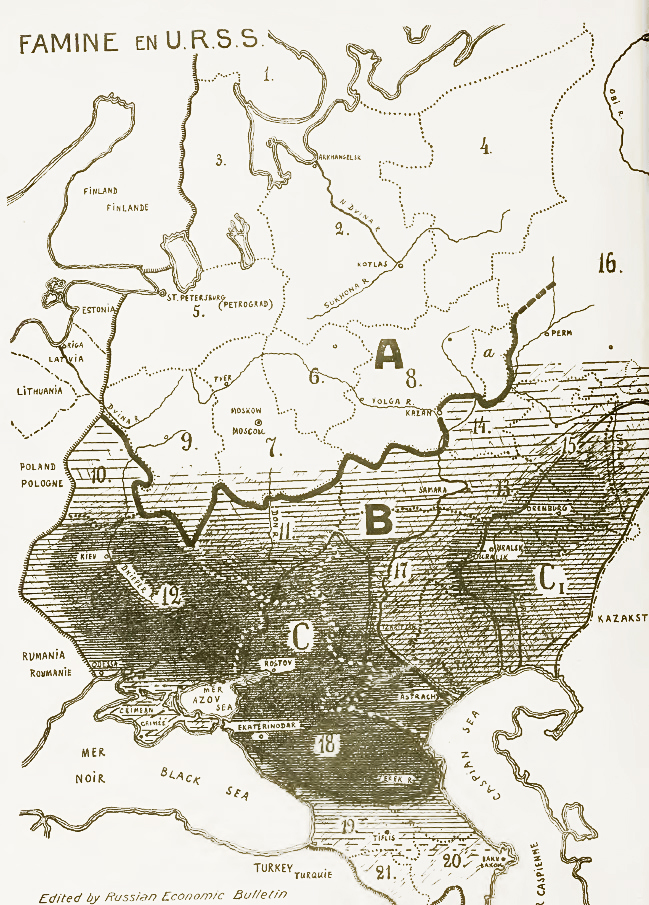|
Sandarmokh
Sandarmokh (russian: Сандармох; krl, Sandarmoh) is a forest massif from Medvezhyegorsk in the Republic of Karelia where possibly thousands of victims of Stalin's Great Terror were executed. More than 58 nationalities were shot and buried there by the NKVD in 236 communal pits over a 14-month period in 1937 and 1938. A thousand of the victims were from the Solovki special prison in the White Sea. It was long thought that the barges carrying them were deliberately sunk on the way to the mainland, drowning all the prisoners on board. Others were rounded up during the Great Terror in Karelia, in accordance with quotas for prisoners, 'enemies of the regime', and a variety of "national operations". According to available documentation at least 6,000 were shot and buried at Sandarmokh."Half those shot ... [...More Info...] [...Related Items...] OR: [Wikipedia] [Google] [Baidu] |
Executed Renaissance
The Executed Renaissance (or "Red Renaissance", uk, Розстріляне відродження, Червоний ренесанс, translit=Rozstriliane vidrodzhennia, Chervonyi renesans) is a term used to describe the generation of Ukrainian language poets, writers, and artists of the 1920s and early 1930s who lived in the Ukrainian Socialist Soviet Republic and were subsequently persecuted, denied work, imprisoned and, in dozens of cases, shot during the Great Terror (August 1937 – November 1938). After the Great Turn in 1929 or "Great Breakthrough" (cf. Mao's Great Leap Forward), the Soviet leader, General Secretary of the Communist Party of the Soviet Union, CPSU Secretary General Joseph Stalin reversed the post-1917 Bolshevik Revolution policies of ''Korenizatsiya'' and Ukrainianization. Outwardly pro-Soviet, poets and writers in Ukraine refused to submit to Stalin's restoration of the House of Romanov, Tsarist policy of the coercive Russification of Ukrai ... [...More Info...] [...Related Items...] OR: [Wikipedia] [Google] [Baidu] |
Solovki Prison Camp
The Solovki special camp (later the Solovki special prison), was set up in 1923 on the Solovetsky Islands in the White Sea as a remote and inaccessible place of detention, primarily intended for socialist opponents of Soviet Russia's new Bolshevik regime. The first book on the Gulag, namely, '' In the Claws of the GPU'' (1934) by Francišak Aljachnovič, described the Solovki prison camp. At first, the Anarchists, Mensheviks and Socialist Revolutionaries enjoyed a special status there and were not made to work. Gradually, prisoners from the old regime (priests, gentry, and White Army officers) joined them and the guards and the ordinary criminals worked together to keep the "politicals" in order. This was the nucleus from which the entire Gulag grew, thanks to its proximity to the first great construction project of the Five-Year Plans, the White Sea–Baltic Canal. In one way, Solovki and the White Sea Canal broke a basic rule of the Gulag: they were both far too close to the ... [...More Info...] [...Related Items...] OR: [Wikipedia] [Google] [Baidu] |
Memorial Society
Memorial ( rus, Мемориал, p=mʲɪmərʲɪˈaɫ) is an international human rights organisation, founded in Russia during the fall of the Soviet Union to study and examine the human rights violations and other crimes committed under Joseph Stalin's reign. Prior to its dissolution in Russia, it consisted of two separate legal entities, Memorial International, whose purpose was the recording of the crimes against humanity committed in the Soviet Union, particularly during the Stalinist era, and the Memorial Human Rights Centre, which focused on the protection of human rights, especially in conflict zones in and around modern Russia. A movement rather than a centralized organization, as of December 2021 Memorial encompassed over 50 organisations in Russia and 11 in other countries, including Kazakhstan, Ukraine, Germany, Italy, Belgium and France. Although the focus of affiliated groups differs from region to region, they share similar concerns about human rights, documenting ... [...More Info...] [...Related Items...] OR: [Wikipedia] [Google] [Baidu] |
Republic Of Karelia
The Republic of Karelia (russian: Респу́блика Каре́лия, Respublika Kareliya; ; krl, Karjalan tašavalta; ; fi, Karjalan tasavalta; vep, Karjalan Tazovaldkund, Ludic: ''Kard’alan tazavald''), also known as just Karelia (russian: Каре́лия, Ка́рьяла; krl, Karjala), is a republic of Russia situated in Northwest Russia. The republic is a part of the Northwestern Federal District, and covers an area of , with a population of 603,067 residents. Its capital is Petrozavodsk. The modern Karelian Republic was founded as an autonomous republic within the Russian SFSR by the Resolution of the Presidium of the All-Russian Central Executive Committee (VTsIK) on 27 June 1923 and by the Decree of the VTsIK and the Council of People's Commissars of 25 July 1923, from the Karelian Labour Commune. From 1940 to 1956, it was known as the Karelo-Finnish Soviet Socialist Republic, one of the union republics in the Soviet Union. In 1956, it was once again made an ... [...More Info...] [...Related Items...] OR: [Wikipedia] [Google] [Baidu] |
Great Purge
The Great Purge or the Great Terror (russian: Большой террор), also known as the Year of '37 (russian: 37-й год, translit=Tridtsat sedmoi god, label=none) and the Yezhovshchina ('period of Nikolay Yezhov, Yezhov'), was General Secretary of the Communist Party of the Soviet Union, Soviet General Secretary Joseph Stalin's campaign to solidify his power over the party and the state; the Purge, purges were also designed to remove the remaining influence of Leon Trotsky as well as other prominent political rivals within the party. It occurred from August 1936 to March 1938. Following the Death and state funeral of Vladimir Lenin, death of Vladimir Lenin in 1924 a power vacuum opened in the Communist Party of the Soviet Union, Communist Party. Various established figures in Lenin's government attempted to succeed him. Joseph Stalin, the party's General Secretary, outmaneuvered political opponents and ultimately gained control of the Communist Party by 1928. Initially ... [...More Info...] [...Related Items...] OR: [Wikipedia] [Google] [Baidu] |
Great Terror
The Great Purge or the Great Terror (russian: Большой террор), also known as the Year of '37 (russian: 37-й год, translit=Tridtsat sedmoi god, label=none) and the Yezhovshchina ('period of Nikolay Yezhov, Yezhov'), was General Secretary of the Communist Party of the Soviet Union, Soviet General Secretary Joseph Stalin's campaign to solidify his power over the party and the state; the Purge, purges were also designed to remove the remaining influence of Leon Trotsky as well as other prominent political rivals within the party. It occurred from August 1936 to March 1938. Following the Death and state funeral of Vladimir Lenin, death of Vladimir Lenin in 1924 a power vacuum opened in the Communist Party of the Soviet Union, Communist Party. Various established figures in Lenin's government attempted to succeed him. Joseph Stalin, the party's General Secretary, outmaneuvered political opponents and ultimately gained control of the Communist Party by 1928. Initially ... [...More Info...] [...Related Items...] OR: [Wikipedia] [Google] [Baidu] |
Butovo Firing Range
The Butovo Firing Range or Butovo Shooting Range (russian: Бутовский полигон) was an execution site of the Soviet secret police located near Drozhzhino in Leninsky District, Moscow Oblast from 1938 to 1953. Its use for mass execution has been documented; it was prepared as a site for mass burial. As the late Arseny Roginsky explained: "firing range" was a popular euphemism adopted to describe the mysterious and closely-guarded plots of land that the NKVD began to set aside for mass burials on the eve of the Great Terror. Butovo was used for mass executions and mass graves during Joseph Stalin's Great Purge, with 20,761 prisoners of various nationalities documented as being transported to the site and executed by the NKVD and its successor agencies. The exact number of victims executed at Butovo remains unknown as only fragmentary data has been declassified. Notable victims at Butovo include Gustav Klutsis and Seraphim Chichagov; in addition, more than 1000 memb ... [...More Info...] [...Related Items...] OR: [Wikipedia] [Google] [Baidu] |
Ukrainianization
Ukrainization (also spelled Ukrainisation), sometimes referred to as Ukrainianization (or Ukrainianisation) is a policy or practice of increasing the usage and facilitating the development of the Ukrainian language and promoting other elements of Ukrainian culture in various spheres of public life such as education, publishing, government, and religion. The term is also used to describe a process by which non-Ukrainians or Russian-speaking Ukrainians come to accept Ukrainian culture and language as their own. A major early case of Ukrainization relates to the Soviet indigenization policy of the 1920s (''korenizatsiya'', literally "putting down roots"), which aimed at strengthening Soviet power in the territory of Soviet Ukraine and in southern regions of the Russian SFSR. In various forms, Ukrainization policies also played out in several different periods of the 20th-century history of Ukraine, although with somewhat different goals and in different historical contexts. Ukrain ... [...More Info...] [...Related Items...] OR: [Wikipedia] [Google] [Baidu] |
Holodomor
The Holodomor ( uk, Голодомо́р, Holodomor, ; derived from uk, морити голодом, lit=to kill by starvation, translit=moryty holodom, label=none), also known as the Terror-Famine or the Great Famine, was a man-made famine in Soviet Ukraine from 1932 to 1933 that killed millions of Ukrainians. The Holodomor was part of the wider Soviet famine of 1932–1933 which affected the major grain-producing areas of the Soviet Union. While scholars universally agree that the cause of the famine was man-made, whether the Holodomor constitutes a genocide remains in dispute. Some historians conclude that the famine was planned and exacerbated by Joseph Stalin in order to eliminate a Ukrainian independence movement. This conclusion is supported by Raphael Lemkin. Others suggest that the famine arose because of rapid Soviet industrialisation and collectivization of agriculture. Ukraine was one of the largest grain-producing states in the USSR and was subject to unre ... [...More Info...] [...Related Items...] OR: [Wikipedia] [Google] [Baidu] |
Korenizatsiya
Korenizatsiya ( rus, коренизация, p=kərʲɪnʲɪˈzatsɨjə, , "indigenization") was an early policy of the Soviet Union for the integration of non-Russian nationalities into the governments of their specific Soviet republics. In the 1920s the policy of korenization (nativization) promoted representatives of the titular nation, and their national minorities, into the lower administrative-levels of the local government, bureaucracy, and nomenklatura of their Soviet republics. In Russian, the term derives from (, "native population"). The policy practically ended in the mid-1930s with the deportations of various nationalities. Politically and culturally, the nativization policy aimed to eliminate Russian domination and culture in Soviet republics where ethnic Russians did not constitute a majority. This policy was implemented even in areas with large Russian-speaking populations; for instance, all children in Ukraine were taught in the Ukrainian language in school. T ... [...More Info...] [...Related Items...] OR: [Wikipedia] [Google] [Baidu] |
House Of Romanov
The House of Romanov (also transcribed Romanoff; rus, Романовы, Románovy, rɐˈmanəvɨ) was the reigning imperial house of Russia from 1613 to 1917. They achieved prominence after the Tsarina, Anastasia Romanova, was married to the First Tsar of Russia, Ivan the Terrible. The house became '' boyars'' (the highest rank in Russian nobility'')'' of the Grand Duchy of Moscow and later of the Tsardom of Russia under the reigning Rurik dynasty, which became extinct upon the death of Tsar Feodor I in 1598. The Time of Troubles, caused by the resulting succession crisis, saw several pretenders and imposters ( False Dmitris) fight for the crown during the Polish–Muscovite War of 1605–1618. On 21 February 1613, a ''Zemsky Sobor'' elected Michael Romanov as Tsar of Russia, establishing the Romanovs as Russia's second reigning dynasty. Michael's grandson Peter I, who established the Russian Empire in 1721, transformed the country into a great power through a series of ... [...More Info...] [...Related Items...] OR: [Wikipedia] [Google] [Baidu] |






